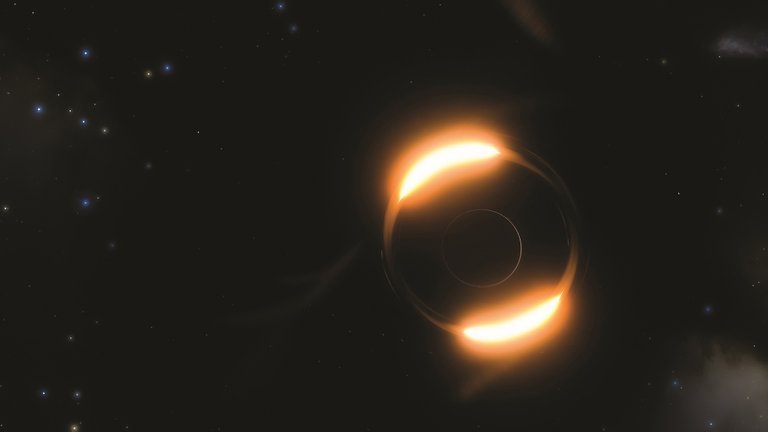Fiery Dance Of Black Holes
Black holes are among the most mysterious objects in the Universe. So we mustn't wasn't an opportunity to study their dance.

Image by CharlVera from Pixabay
- Be also sure to check out my other posts and follow me @kralizec and subscribe to my Youtube channel at Kralizec Gaming Youtube Channel
Black holes have such crushing gravity that nothing escapes it. Not even light. Sadly, that means we cannot observe them directly – we have to watch how they affect their surroundings. But sometimes the Universe throws us a bone and gives us an opportunity when a black hole almost seems to beg for our attention.
This is precisely the case of a pair of supermassive black holes that orbit each other in an incredible space-dance which causes periodic extremely bright radiation flashes that are so bright that they are capable of outshining a trillion stars or even a whole galaxy.
Lankeswar Dey from the Tata Institute of Fundamental Research in Bombay, India, and his coworkers analyzed these flashes in great detail to map the choreography of the dance of these supermassive black holes. The result of their research is a model that allows them to predict future flashes of this stunning system.
A key role in the research was played by an observation made by the American space infrared telescope Spitzer.
The Dance of OJ Galaxy
The pair of supermassive black holes dances in the center of the OJ 285 galaxy. This galaxy is roughly 3.5 billion light-years away from Earth. The more massive of the two black holes is actually one of the largest ones we have ever seen in the Universe.
Its mass is truly incredible. Over 18 billion Suns. The smaller supermassive black hole pales in comparison with its “just” 150 million Suns. Yet, that is still about 35 times more than the mass of the supermassive black hole at the center of our galaxy.
Twice per 12 years the smaller of the two supermassive black holes passes through the accretion disk of the larger supermassive black hole. When that happens the smaller black hole feeds on a lot of dust and gas and blasts off an extremely shiny blast of radiation. The orbit of the smaller supermassive black holes is not regular so the place where it passes through the accretion disk of the larger supermassive black holes constantly changes.
This makes the flashes irregular as well but they do repeat in a very complex pattern. Sometimes it takes just a single year before another flash appears but it also may take decades.
Sources:
- If you like the content I’m producing about science maybe you will like the content I produce about gaming as well! Be sure to check out my other posts!
Congratulations @kralizec! You have completed the following achievement on the Hive blockchain and have been rewarded with new badge(s) :
You can view your badges on your board and compare to others on the Ranking
If you no longer want to receive notifications, reply to this comment with the word
STOPDo not miss the last post from @hivebuzz:
Vote for us as a witness to get one more badge and upvotes from us with more power!